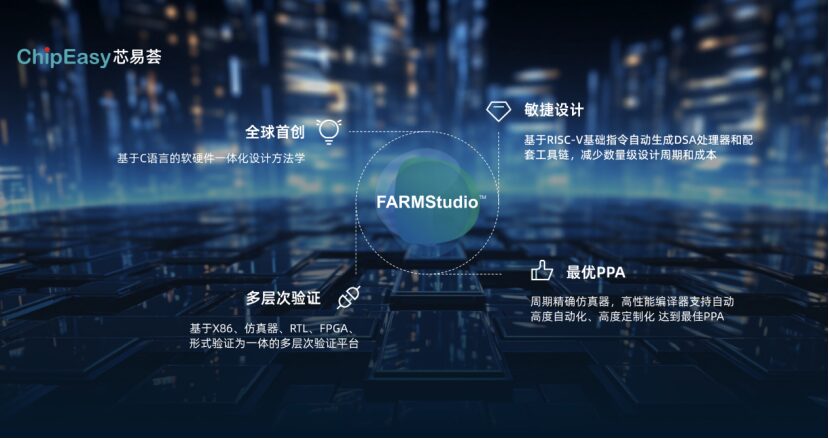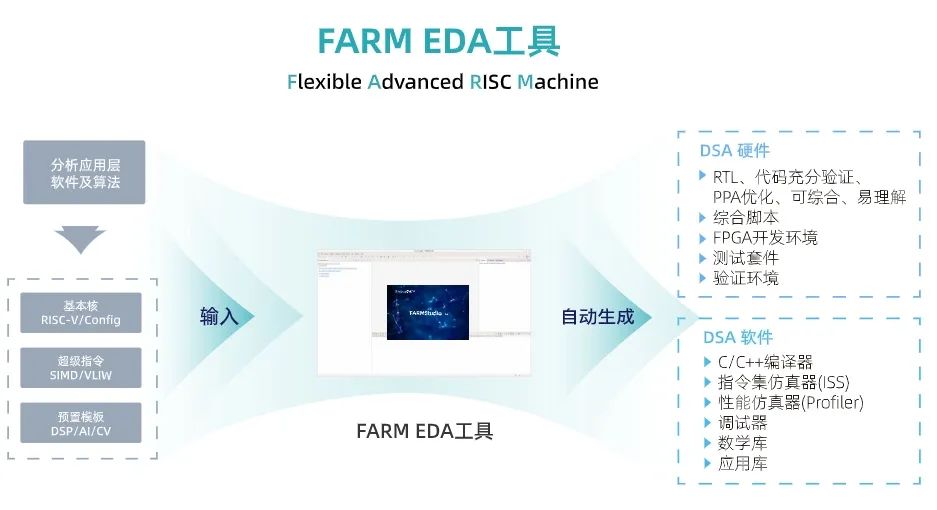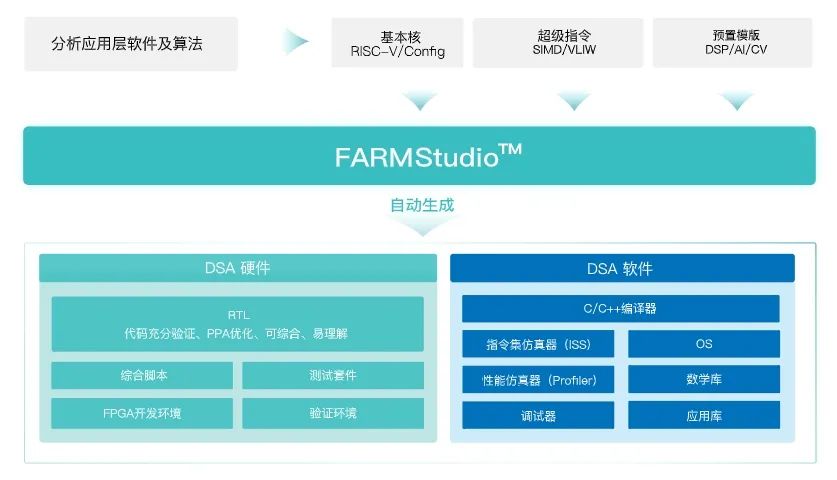
This public account (fxkjwx) is the official WeChat of the Fengxian District Science and Technology Commission, providing services related to Fengxian’s science and technology policies, innovation and entrepreneurship environment, smart city construction, and various popular science information.
The official webpage of the Fengxian Science and Technology Commission (https://www.fengxian.gov.cn/kw/), welcome to bookmark and browse.
Searching for New Quality Productivity

“When AI came out,
everyone was saying,
in the future, AI can directly design CPUs.
But as someone in the industry,
we know,
this still requires a long process.”
Zhang Weihang, Vice President of R&D at ChipEasy, stated that chip design is a precise description process. If AI designs using traditional design languages, the description space is huge, but “if you get one bit wrong, the entire CPU could crash.”
Therefore, for AI, designing chips also requires handy tools— a chip design platform that can provide appropriate flexibility and optimization space.
Recently, the Shanghai startup ChipEasy’s self-developed EDA tool FARMStudio has launched its 2.0 version. As ChipEasy’s first self-developed product, FARMStudio is also the world’s first dedicated processor generation tool that uses C language descriptions and is based on the RISC-V basic instruction set. It not only unifies software and hardware description languages but also significantly lowers the threshold for chip design, automatically generating dedicated processor chips in minutes, greatly shortening the chip R&D and verification cycle, and accelerating product market launch.

“I never worry that AI will replace our tools; our tools will occupy a very important position in the AI era. The only question is how to better let AI utilize them.” Zhang Weihang said.

01
This Open Question,
Why Choose C
Before the era of AI chip design arrives, the self-developed chip heatwave triggered by the AI wave has quietly arrived. In recent years, “self-developed chips” and “custom chips” have become new competitive tracks for many tech companies: many well-known mobile phone manufacturers, automotive manufacturers, and home appliance manufacturers have begun to venture into chip making.
The demand for processing large amounts of data in the AI era makes the DSA (Domain-Specific Architecture) track for customizing chips particularly hot. In the view of ChipEasy CEO Wang Dajun, this is an inevitable development in the industry: “The value of data is reflected in the final application. Utilizing data and analyzing data requires differentiated data processing and algorithms, and customized semiconductors can protect their core value.”
As more software companies and frontend enterprises enter the chip design track, the integration of software and hardware, and the connection between front and back ends, is becoming a new trend in the industry. This also poses new challenges for chip design platforms.
In the field of IC chip design, there are many hardware description languages, such as the mainstream RTL languages Verilog, VHDL, and the recently emerged high-level language Chisel. As a startup, ChipEasy did not choose these hardware description languages but opted for C language for hardware description. Why?

“In the DSA field, the software and hardware architects we face are naturally familiar with C language,” Zhang Weihang replied. “Using C language as input in FARMStudio allows software and hardware engineers to truly collaborate in the same design environment.”
“C language may seem quite old to those outside the industry, but its position in the industry is unshakeable.” Zhang Weihang further explained that in embedded development, CPU-oriented optimized development, algorithm development, and even AI foundational algorithm aspects, C language is widely used and has significant advantages. For those working with AI algorithms, once they reach the lower level to achieve operator optimization, they must confront C language.
02
Shifting Exploration Left, Decision Making Right
“In traditional chip design, generally, after development, verification is conducted, which makes the entire cycle very long.” Xu Ming, Marketing Director of ChipEasy, explained that once problems arise during verification, the process must start over. “The so-called ‘shifting exploration left’ means that hardware designers can know the final hardware performance and power cost before hardware generation, allowing for rapid iteration of hardware design to achieve the best PPA, while also adapting to software to improve software efficiency.”

“We are determined to create a one-stop analysis, verification, and iterative development platform.” Zhang Weihang stated that FPGA, as a “universal chip,” has unique advantages in verification, but since each FPGA has different configurations, problems arise when unifying interfaces. “To this end, we proposed a relatively thorough solution—cloud virtual FPGA verification.”
“Cloud virtual FPGA verification” does not require chip design companies to build another FPGA platform, helping users conveniently and quickly verify. It supports cloud FPGA burning, debugging, and real-time log viewing via a UART virtual terminal, among other basic functions, and also provides operating system-level virtual interfaces, such as virtual file system services, and virtual audio and video device services. Applications running on cloud virtual FPGA can directly access files and audio-video devices on the local system, effectively avoiding hardware debugging and driver-related issues, maximizing user development efficiency.
“Currently, we have deployed two different sizes of FPGAs in the cloud, which can be directly connected to the cloud via local connections, penetrating directly into our machine room for simulation. Verification no longer needs to wait several months; with our tools, rapid iteration can be achieved, and changing something may only take a few minutes to produce results.”
Because the architecture and software and hardware implementation decisions are entirely based on determined functional designs, verification results, and PPA data, it minimizes uncertainty and risk in decision-making, and the softwareization of hardware design can solve the difficulties of modifications in chip design, thus achieving “decision-making right.”
03
The Biggest Challenge of Entrepreneurship
Is Matching Resources and Opportunities
Founded in Shanghai in 2021, ChipEasy officially launched FARMStudio as its first product in 2023. In 2024, FARMStudio 2.0 was released. Currently, ChipEasy’s R&D team has exceeded 60 people.
Faced with the current self-developed chip heatwave brought by AI, compared to traditional large companies, startups seem to have a more flexible posture to jointly achieve custom development with customers. On the other hand, startups also need to participate in the market iteration process and cannot “build in isolation.”
After three years of entrepreneurship and two iterations of products, Wang Dajun believes that the key lies in “matching resources and opportunities well.” “The iteration of tools relies on customer feedback, which poses a challenge for us, as our tools also have plans for updates and iterations, and customer needs will certainly impact or change those plans. Fortunately, we use our own tools to meet customer needs, so our iterations in this regard will be much faster.”

“In the early stages of company development, you cannot just sit behind closed doors and conceive what kind of tools to create. I believe that the development of the company and the product is an iteration process that follows the market, so custom development and self-tool development are not contradictory at all.”
04
Not Making “Me-too” Products
In the field of innovative drugs, new drugs that have their own intellectual property and are comparable in efficacy to breakthrough drugs of the same kind are referred to as Me-too drugs. However, it seems that a similar relationship exists in the chip design field with Me-too and First-in-Class.
“We are not making Me-too products. Many domestic EDA tools are merely domestic replacements, but what we are doing is genuinely original and disruptive.”
“To create disruptive tools, one must first disrupt oneself.” Wang Dajun said, “There is an English saying, Eating your own dog food; after making your own dog food, eat a bit to know ‘OK, my tool can be used,’ and see where it is not good enough and what optimizations need to be made on the tool.”
However, for startups, it is naturally impossible to grasp everything. “We need to choose what to focus on in the coming years.” It is reported that ChipEasy will continue to focus on ecological construction, targeting different groups such as students and researchers.
In Wang Dajun’s view, with the arrival of the big data era, the future will be a world of “a hundred flowers blooming,” where everyone is searching for applications they can realize and markets they can meet, “the opportunities facing our tools are very large.”
-END-


Fengxian Technology
Fengxian Technology
Policy Pocketbook
Scan the QR code
to learn more information